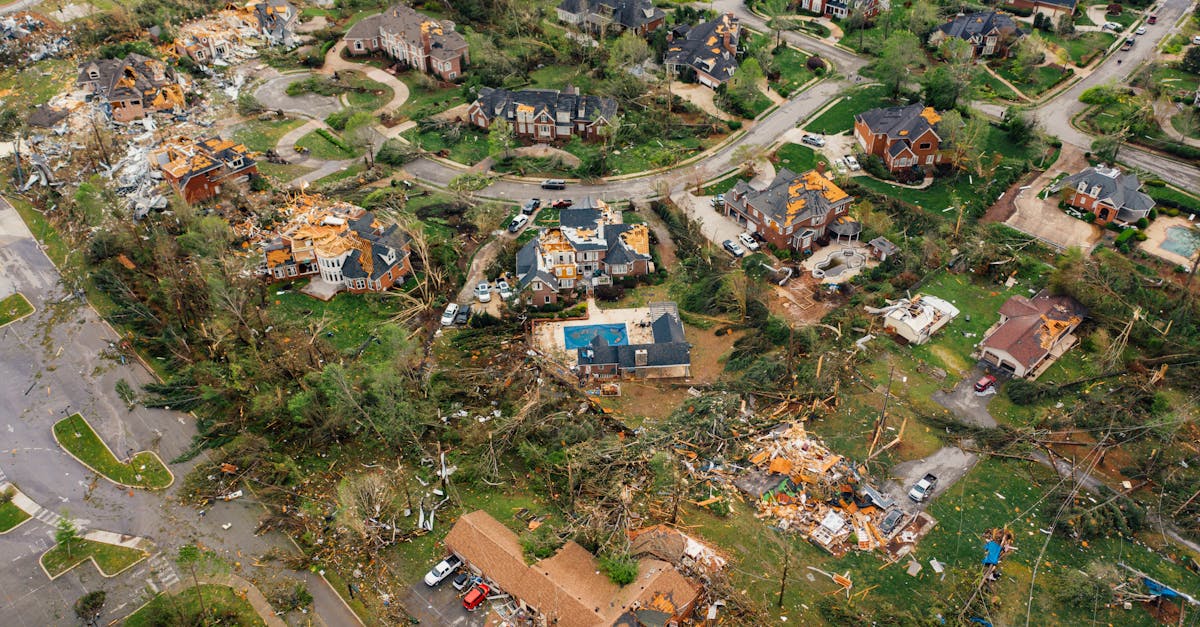
Introduction
In May 2025, a devastating tornado outbreak swept across the central United States, leaving a path of destruction in its wake. This catastrophic event stretched over several days, affecting thousands of lives. While tornadoes are not uncommon in this region, this particular outbreak was unprecedented in scale and intensity. Communities were left grappling with the aftermath, as homes were destroyed and infrastructure severely damaged. In the face of such a natural disaster, courage and resilience emerged from both victims and rescuers. In this article, we will delve into the specifics of the May 2025 tornado outbreak, its impacts, and the responses that ensued.
The Science Behind the Outbreak
The May 2025 tornado outbreak was a result of a unique atmospheric phenomenon. A powerful combination of warm, moist air from the Gulf of Mexico met with cool, dry air from Canada. This clash produced a high energy environment conducive to severe thunderstorms. Notably, a strong jet stream intensified the system, enabling the formation of supercell storms. Meteorologists had warned of potential tornadoes, but the sheer number and severity were unexpected. The outbreak involved more than 50 tornadoes, many of which were classified as EF3 or higher, marking them as extremely destructive events.
Affected Regions and Extents of Damage
The tornadoes tore through several states including Oklahoma, Kansas, Missouri, and Nebraska, among others. Communities in both urban and rural settings faced immense destruction. In the small town of El Reno, Oklahoma, nearly 80% of structures were either severely damaged or completely leveled. Kansas City experienced widespread power outages affecting emergency services. Thousands of acres of farmland were destroyed, further impacting the region's economy. Infrastructure such as roads and bridges suffered extensive damage, complicating rescue and recovery efforts.
Loss of Lives and Injuries
Tragically, the tornado outbreak resulted in significant loss of life. Official reports indicate that at least 180 people lost their lives, with countless others injured. Hospitals quickly became overwhelmed by the surge of patients, some with critical injuries requiring immediate medical attention. The toll on families was profound, with many losing loved ones and witnessing life-altering devastation. Heroes emerged, as first responders, medical professionals, and volunteers worked tirelessly to save lives and provide urgent care. The emotional scars will last for years to come.
Immediate Response and Rescue Efforts
In the initial hours and days following the outbreak, emergency response teams pooled resources to conduct search and rescue missions. The Federal Emergency Management Agency (FEMA) coordinated with state and local agencies to deploy assistance swiftly. Neighboring states sent additional aid, including medical teams, equipment, and volunteers. The immense scale of the disaster necessitated the establishment of temporary shelters for displaced residents. Rescue operations were relentless, underpinned by the commitment to uncover survivors buried under debris and provide immediate relief to affected families.
Community Resilience and Support
Amid the chaos, stories of community resilience and solidarity emerged. Neighbors helped neighbors, sharing scarce resources and offering emotional support. Civic organizations, charities, and faith communities mobilized to gather and distribute essential supplies such as food, water, and clothing. Communities across the nation rallied to support the affected, raising funds and donating vital items. Social media became a platform for highlighting needs and coordinating relief efforts, with countless acts of kindness recorded and celebrated.
Long-term Economic and Environmental Impacts
The economic ramifications of the tornado outbreak are expected to linger for years. The agricultural sector was hit hard as vast tracts of cropland were obliterated. Businesses faced reconstruction efforts, and insurance claims soared, impacting regional economic stability. Environmentally, the outbreak left scars on the landscape, with forests uprooted and ecosystems disrupted. Recovery will be a lengthy process, requiring coordinated efforts from government agencies, businesses, and residents. Restoration plans are in the pipeline, aiming to rebuild stronger and mitigate future risks.
Role of Modern Technology in Disaster Management
The 2025 outbreak demonstrated the pivotal role of technology in disaster preparedness and response. Advanced weather prediction systems and satellite imagery played a crucial role in early warnings, allowing residents and authorities to prepare. Drones were employed to assess damages, providing crucial data for strategic response planning. Social media platforms facilitated rapid information dissemination, enabling real-time updates to citizens and emergency teams. The future of disaster management will lean increasingly on technology to reduce human vulnerability and enhance resilience.
Lessons Learned from the Tornado Outbreak
The May 2025 tornadoes served as a reminder of nature's unpredictable power, pushing communities to reconsider their preparedness strategies. Experts emphasize the importance of robust building codes and resilient infrastructure to withstand severe weather. The event has also highlighted the need for comprehensive emergency planning, including public education on safety measures and evacuation procedures. Investment in meteorological technology and disaster management systems is crucial to minimizing future loss. The collective experience has underscored the need for a united, whole-of-society approach to disaster resilience.
Conclusion
The May 2025 tornado outbreak in the central US left an indelible mark on the lives of those affected. The combination of scientific advancements and overwhelming community resilience showcased humanity's capacity to face adversity head-on. Though lives were lost, the tragedy brought about unity and highlighted areas for future improvement. Recovery will require ongoing dedication and collaboration among diverse stakeholders. Through unwavering resolve and commitment, communities can rebuild and emerge stronger in the aftermath of calamity. This event serves as a poignant reminder of the volatile beauty and power of our natural world.